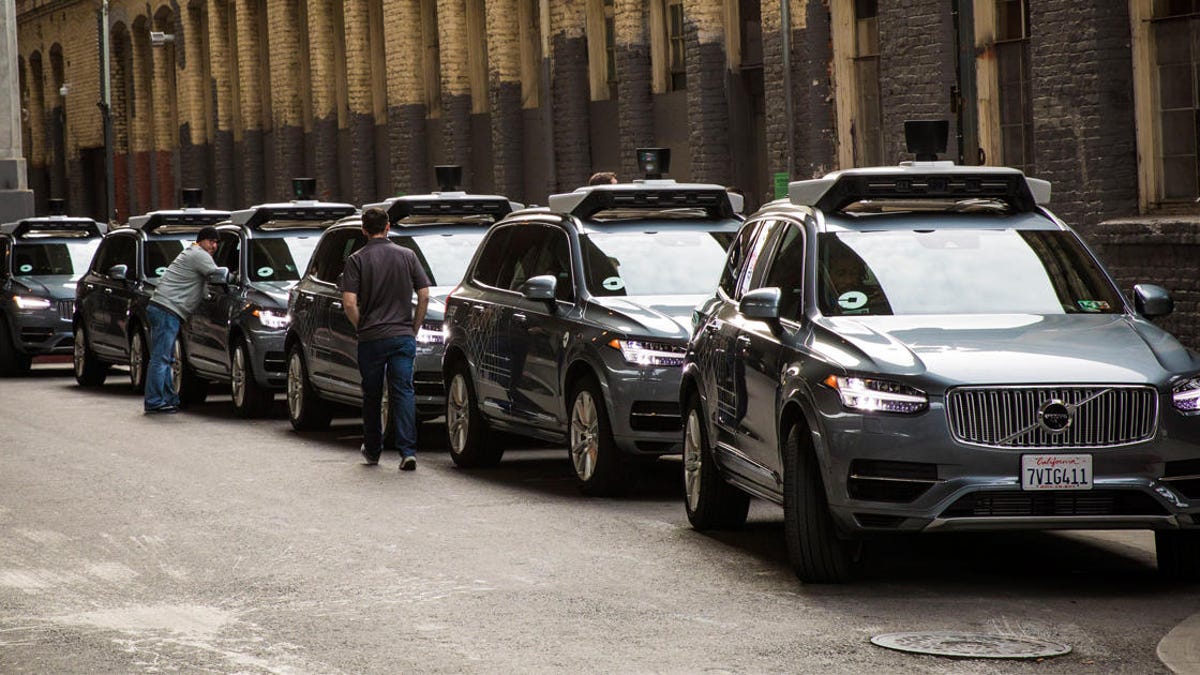Uber's fatal self-driving crash reportedly caused by software
The software that's supposed to detect objects in the road was tuned down, which caused it to ignore a pedestrian walking across a dark Arizona road, according to The Information.

The vehicle involved in the crash was one of Uber's Volvo XC90s, which have been modified to accept Uber's hardware and software so they function as self-driving cars.
Uber has reportedly found that a software problem likely caused a fatal accident involving one of its self-driving cars in Tempe, Arizona in March. That software is meant to determine how the car should react to detected objects, two people familiar with the matter told The Information.
Although the car's sensors reportedly detected the pedestrian, Uber's software determined that it didn't need to immediately react because of how it was tuned.
The software is supposed to ignore what are known as "false positives," or objects that wouldn't be an issue for the vehicle, like a plastic bag or piece of paper. Company executives told The Information that they believe the system was tuned in a way that made it react less to these objects -- meaning it reportedly didn't react fast enough when the pedestrian crossed the street.
During the collision, an operator was behind the wheel but the car was in autonomous mode. The operator was not looking at the road the moments before the car hit 49-year-old Elaine Herzberg at around 40 mph. Uber settled with the victim's family later that month. This was the first known fatality from an autonomous vehicle accident on a public road.
For now, Uber has temporarily halted its self-driving operations in all cities where it's been testing its vehicles, including Tempe, Phoenix, Pittsburgh, San Francisco and Toronto.
An Uber spokeswoman said the company has initiated a top-to-bottom safety review of its autonomous vehicle program and hired the former chair of the US National Transportation Safety Board, Christopher Hart, to advise the company on its overall safety culture.
"Our review is looking at everything from the safety of our system to our training processes for vehicle operators," the spokeswoman said.
Meanwhile, the Tempe police are working with Uber representatives, the NTSB and the US Department of Transportation's National Highway Traffic Safety Administration in their investigation to determine who, or what, was at fault for the accident. Uber declined to say whether the tuned-down software was responsible for the crash.
"We're actively cooperating with the NTSB in their investigation," the Uber spokeswoman said. "Out of respect for that process and the trust we've built with NTSB, we can't comment on the specifics of the incident."
First published May 7 at 11:29 a.m. PT.
Update, 11:40 a.m. PT: Adds background on the crash.



